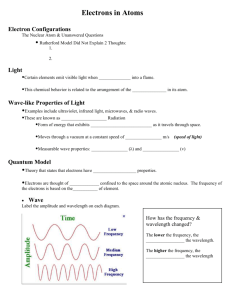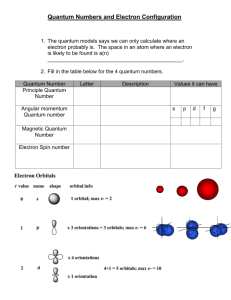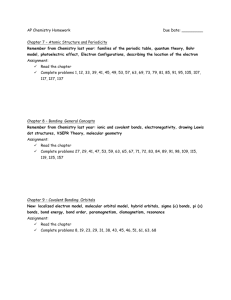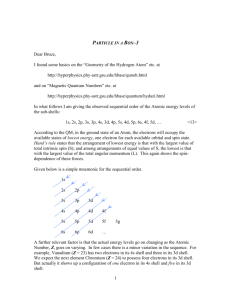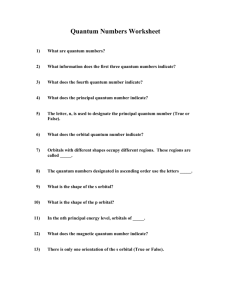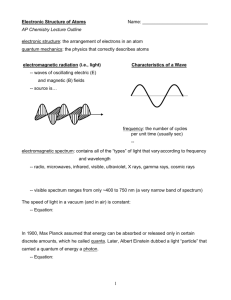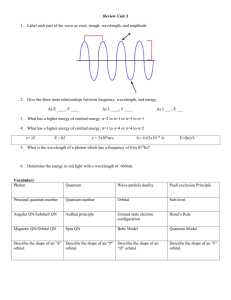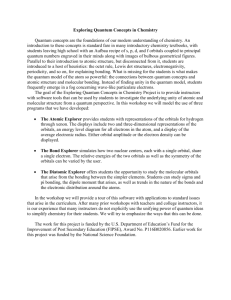Quantum Mechanical Model of the Atom
advertisement
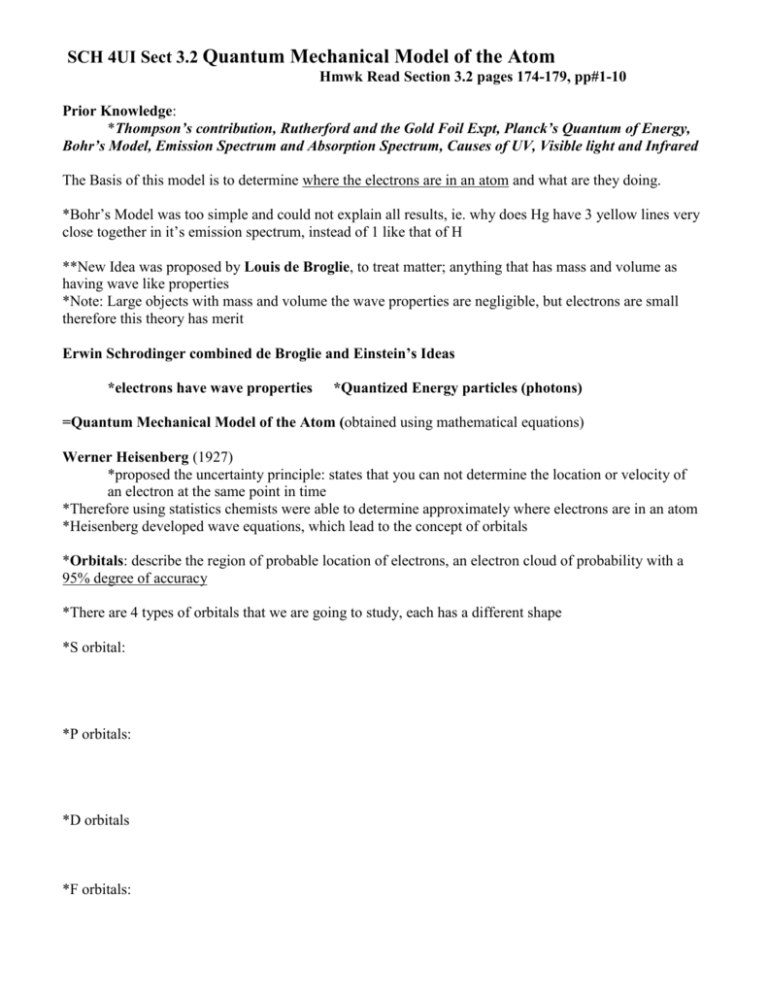
SCH 4UI Sect 3.2 Quantum Mechanical Model of the Atom Hmwk Read Section 3.2 pages 174-179, pp#1-10 Prior Knowledge: *Thompson’s contribution, Rutherford and the Gold Foil Expt, Planck’s Quantum of Energy, Bohr’s Model, Emission Spectrum and Absorption Spectrum, Causes of UV, Visible light and Infrared The Basis of this model is to determine where the electrons are in an atom and what are they doing. *Bohr’s Model was too simple and could not explain all results, ie. why does Hg have 3 yellow lines very close together in it’s emission spectrum, instead of 1 like that of H **New Idea was proposed by Louis de Broglie, to treat matter; anything that has mass and volume as having wave like properties *Note: Large objects with mass and volume the wave properties are negligible, but electrons are small therefore this theory has merit Erwin Schrodinger combined de Broglie and Einstein’s Ideas *electrons have wave properties *Quantized Energy particles (photons) =Quantum Mechanical Model of the Atom (obtained using mathematical equations) Werner Heisenberg (1927) *proposed the uncertainty principle: states that you can not determine the location or velocity of an electron at the same point in time *Therefore using statistics chemists were able to determine approximately where electrons are in an atom *Heisenberg developed wave equations, which lead to the concept of orbitals *Orbitals: describe the region of probable location of electrons, an electron cloud of probability with a 95% degree of accuracy *There are 4 types of orbitals that we are going to study, each has a different shape *S orbital: *P orbitals: *D orbitals *F orbitals: *The location of electrons is described using quantum numbers. Quantum numbers essentially provide the co-ordinates for each electron in an atom. *Principle Quantum number, n *describes the energy level *Second Quantum number, l *describes the orbital shape quantum number *Magnetic Quantum number, ml *indicates the sub level of the orbital *Fourth Quantum number, ms *spin quantum number Practice…

